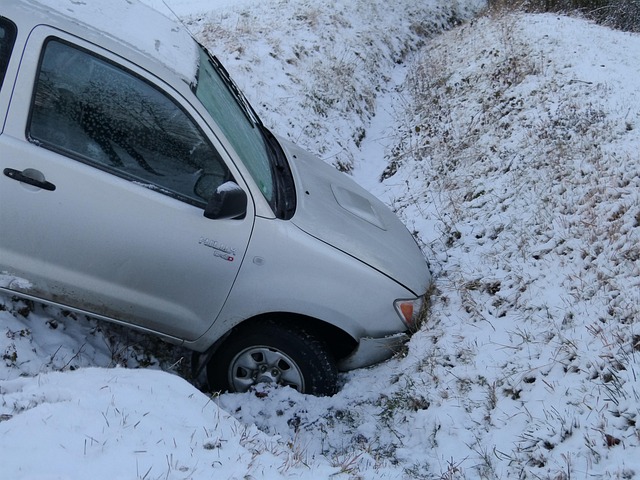Spinal cord injuries cause significant nerve damage, leading to various symptoms. Advanced imaging techniques like MRI, CT, and PET scans are crucial for non-invasive detection and accurate diagnosis of these injuries and related nerve damage. These technologies offer detailed visualizations, aiding in identifying fractures, dislocations, and internal bleeding early on. Despite benefits, challenges include cost, availability, and effectiveness in detecting soft tissue injuries. Ongoing research aims to enhance resolution, develop functional MRI, and create portable, affordable devices for improved spinal cord evaluation at the point of care.
Detecting spinal cord injuries and associated nerve damage is crucial for prompt and effective treatment. While traditional diagnostic methods like X-rays and MRI scans provide insights, advanced imaging techniques are revolutionizing neuroscience. This article explores these cutting-edge approaches, delving into the types of advanced imaging for nerve damage detection, their benefits, limitations, and future prospects. From enhanced resolution to functional imaging, these technologies promise improved diagnosis and patient outcomes in managing spinal cord injuries.
Understanding Spinal Cord Injuries and Nerve Damage
Spinal cord injuries can cause significant damage to the delicate nerves and tissues that make up this vital part of the body. Understanding nerve damage in the context of spinal cord injuries is essential for accurate diagnosis and effective treatment. Nerve damage resulting from trauma, compression, or disease can manifest in various ways, leading to a range of symptoms such as numbness, tingling, weakness, or complete paralysis below the injury site.
Advanced imaging techniques play a crucial role in detecting nerve damage associated with spinal cord injuries. Methods like magnetic resonance imaging (MRI) and computed tomography (CT) scans offer detailed visualizations of the spinal cord, allowing healthcare professionals to identify lesions, compressions, or structural abnormalities that may indicate nerve damage. These non-invasive tools enable precise assessments, guiding treatment decisions and promoting better outcomes for patients with spinal cord injuries.
Traditional Diagnostic Methods vs Advanced Imaging Techniques
In the diagnostic journey for spinal cord injuries, traditional methods have long relied on physical examinations, neurologic tests, and conventional imaging like X-rays and MRI scans. While effective, these techniques often present limitations when it comes to detecting subtle nerve damage or pinpointing the exact extent of an injury. This is where advanced imaging techniques step in as game-changers.
Advanced imaging technologies, such as diffusion tensor imaging (DTI) and functional MRI (fMRI), offer a deeper look into the complex neural network. These methods can visualize the structure and function of nerves, providing valuable insights into nerve damage imaging. By mapping out white matter tracts and detecting changes in blood flow, advanced imaging allows for more accurate identification of spinal cord injuries and their impact on nervous system functionality.
Types of Advanced Imaging for Nerve Damage Detection
Advanced imaging techniques play a pivotal role in detecting spinal cord injuries and assessing nerve damage. Among the various methods, Magnetic Resonance Imaging (MRI) stands out for its ability to visualize soft tissues, including the intricate structures of the spinal cord and peripheral nerves. By employing specialized sequences like T2-weighted images and diffusion tensor imaging (DTI), healthcare professionals can identify demyelination, axonal damage, and neurological deficits associated with nerve injury.
Computerized Tomography (CT) scans also offer valuable insights into bone fractures and potential spinal cord compression. Unlike MRI, CT provides high-resolution cross-sectional images, making it useful for initial assessments and monitoring the stability of vertebral columns. Additionally, Positron Emission Tomography (PET) scans can detect metabolic changes in nerve tissues, helping to pinpoint areas of active inflammation or ischemia, crucial information for guiding treatment strategies in cases of severe nerve damage imaging.
Benefits, Limitations, and Future Prospects of These Imaging Technologies
Advanced imaging technologies offer significant benefits in detecting and diagnosing spinal cord injuries, enabling early interventions that can mitigate nerve damage. Techniques like magnetic resonance imaging (MRI) and computed tomography (CT) scans provide detailed visualizations of the spine, helping healthcare professionals identify fractures, dislocations, or internal bleeding. These non-invasive methods are crucial for accurate assessments without exposing patients to ionizing radiation, unlike traditional X-rays.
Despite their advantages, these imaging technologies also face limitations. MRI scanners are expensive and not readily available in all medical settings, while CT scans may not always detect soft tissue injuries as effectively. Additionally, some conditions require specialized imaging techniques, adding complexity and cost. However, ongoing research and technological advancements hold promise for improving nerve damage imaging. Future prospects include enhanced resolution imaging, functional MRI to assess neural activity, and the development of portable, affordable devices to bring advanced spinal cord evaluation closer to the point of care.
Advanced imaging techniques have revolutionized the detection of spinal cord injuries and nerve damage, offering more accurate and efficient diagnosis compared to traditional methods. By employing technologies like MRI, CT scans, and novel techniques such as diffusion tensor imaging (DTI), healthcare professionals can now visualize and assess the intricate structures within the spine with remarkable precision. These imaging tools not only enable timely intervention but also play a pivotal role in improving patient outcomes by providing valuable insights into the extent and location of nerve damage. As research progresses, continued refinement of these technologies holds immense potential to further enhance our understanding and management of spinal cord injuries.
